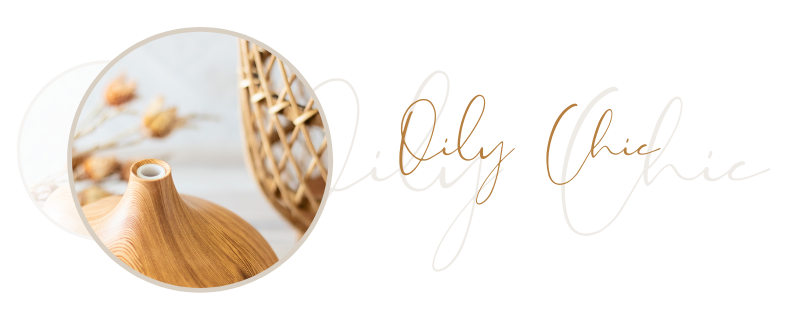Do you know how to apply essential oils and where to apply them?
Do you know where to apply essential oils? Here are 3 common mistakes many make when applying essential oils topically.
Learning how to apply essential oils topically is one of the most confusing things about using essential oils. Why? Because it involves three very important steps, you need to know in order to use essential oils safely and accurately.
By now, you’ve likely heard a friend or family member say, “There’s an oil for that.”
And essential oils often do provide an answer to many common ailments or stressors. They can help provide a great number of benefits, including clearer skin, healthier hair, and even seasonal support. While it is important to know what oils to use for each need, it is just as important to know how and where to apply them.
So, let’s break it down into 3 simple steps!
For your convenience, This article contains affiliate links; read the full disclosure policy.
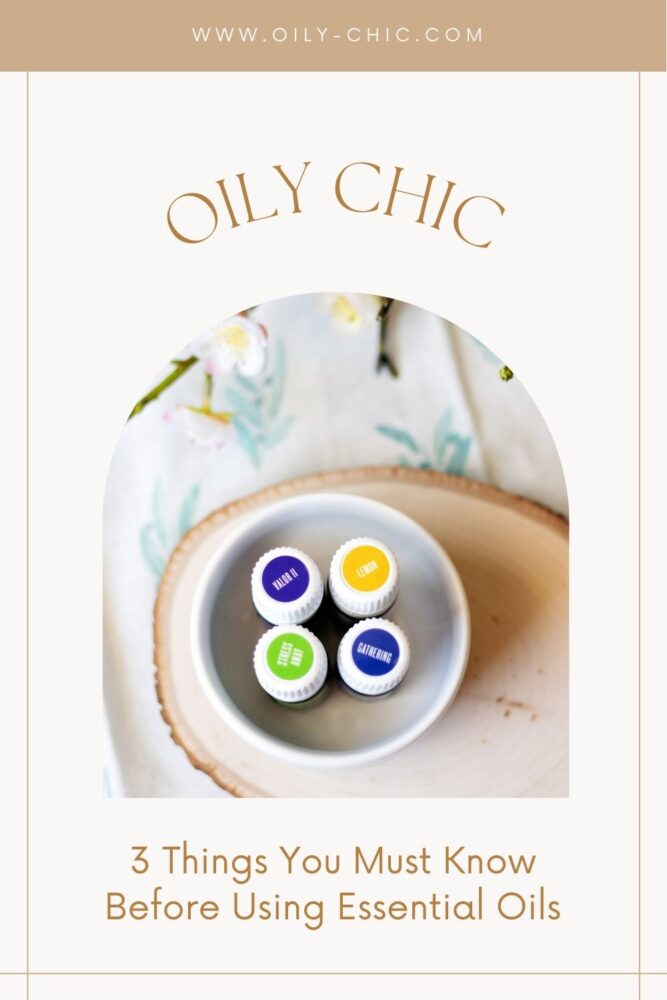
Step 1: Diluting Essential Oils
When I began learning to use essential oils years ago, how to dilute essential oils puzzled me. And I wouldn’t be surprised if you’re feeling the same. Here’s a simple explanation for essential oil dilution.
Some oils can be applied directly to the skin, although it is not recommended as a general rule. You see, essential oils are highly concentrated plant matter, easily absorbed by the body. And due to their high concentration, essential oils need to be properly diluted before applying to the skin.
By diluting essential oils, you help diminish any sensitivity without blocking the effectiveness. Grasp more about essential oil dilution here, including a printable dilution chart.
Related: FAQs Essential Oil Guide
Step 2: Blending Essential Oils
Now that you’ve covered the guidelines to dilute, you are ready to blend! And carrier oils are the easiest way to dilute and blend essential oils.
Carrier oils help spread or carry an essential oil’s concentration across the skin without changing the therapeutic properties.
There are quite a few options for using carrier oils for blending, such as my personal favorite, fractionated coconut oil.
The best carrier oils are packed with antioxidants and vitamins, while others are better used for cooking or other uses. Learn the best carrier oils for blending and those to avoid before applying essential oils topically.
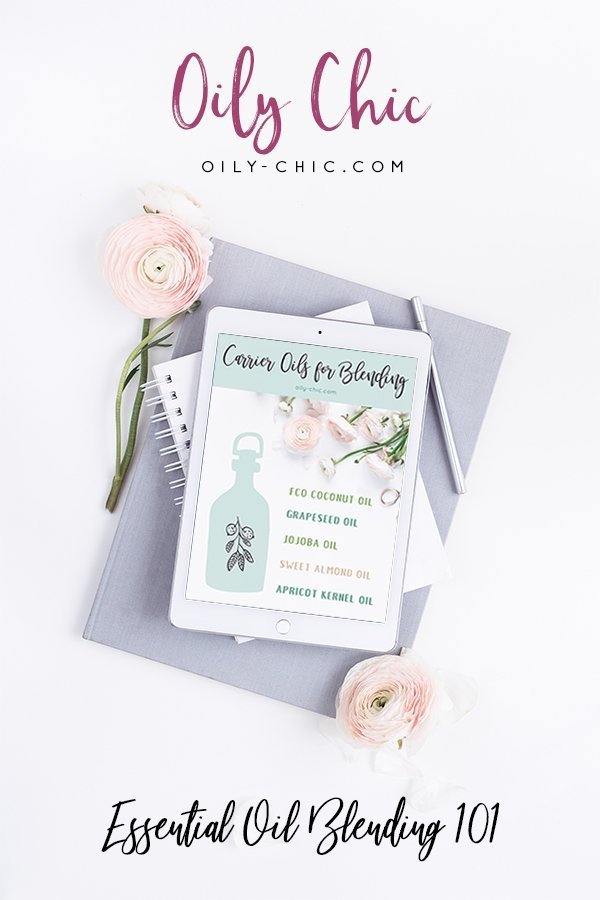
Pin this ultimate list of carrier oils for essential oil blending to share, or grab the printable carrier oil blending reference guide in the Oily Chic Library.
Related: Does Essential Oil Storage Matter
Step 3: Applying Essential Oils
There are a number of ways to dilute essential oils with a carrier oil, such as in an essential oil roller bottle, eye dropper bottle, spray bottle with a fine mist, or simply in the palm of your hand.
After diluting the essential oil with a carrier oil, you can apply it to the skin. Where do you put essential oils on the body? Here’s a list of several key areas and a printable chart to share!
Where to Apply Essential Oils Reference Guide:
Bottoms of the Feet
Behind the Ears
Back of the Neck
On the Temples
Lower or Upper Abdomen
On the Chest
Upper or Lower Back
Inside of the Wrists
Nape of Neck
Across the Ankles
Crown of the Head
Top the Shoulders
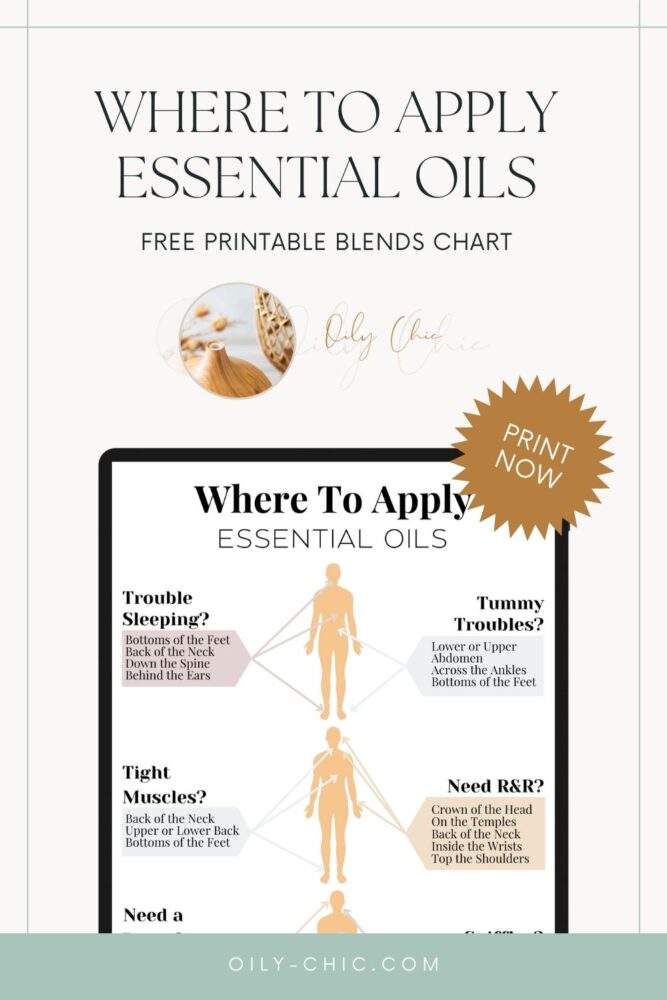
Pin this guide on where to apply to essential oils to share or download the printable chart in the Oily Chic Library.
When and How to Apply Essential Oils
As you can see from the list above, there are many areas on the body to apply essential oils topically. And between remembering all those places, diluting, and choosing a carrier oil, you might feel overwhelmed right now.
And that is the last way I want you to feel! Therefore I’ve included tips on where to apply essential oils for everyday needs below to help you get started.
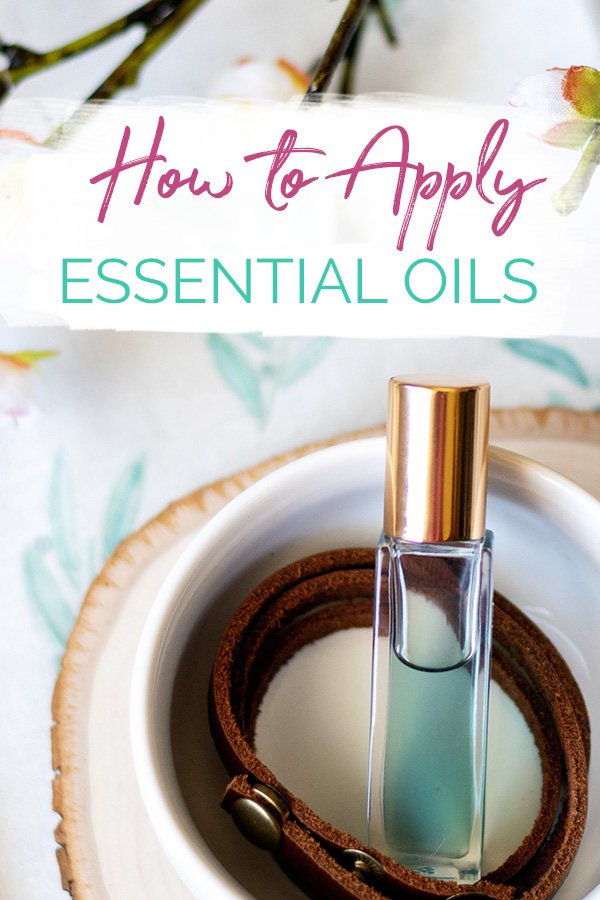
Trouble Sleeping?
I have tried numerous things to help me get better sleep naturally. And nothing has been more effective for me than using essential oils for sleep!
Where to Apply:
Bottoms of the Feet
Back of the Neck
Down the Spine
Behind the Ears
Tight Muscles?
Dilute essential oils in an Epsom salt bath or with a warm or cold compress.
Where to Apply:
Back of the Neck
Upper or Lower Back
Bottoms of the Feet
Need A Boost?
Essential oils are one of my favorite alternatives to caffeine and are absorbed rapidly.
Where to Apply:
Behind the Ears
Inside the Wrists
On the Temples
Tummy Troubles?
We’ve all heard that peppermint can help with digestion, but have you ever tried it in a pure essential oil form…
Where to Apply:
Lower or Upper Abdomen
Across the Ankles
Bottoms of the Feet
Need Some R&R?
Support your self care rituals or ease tension and stress with essential oils.
Where to Apply:
Crown of the Head
Inside the Wrists
Top the Shoulders
On the Temples
Back of the Neck
Got the Sniffles?
Make a breathe easy blend if the sniffles find you. (You can find all my favorite essential oil blends on Pinterest.)
Where to Apply:
On the Chest
Back of the Neck
Across the Nose Bridge
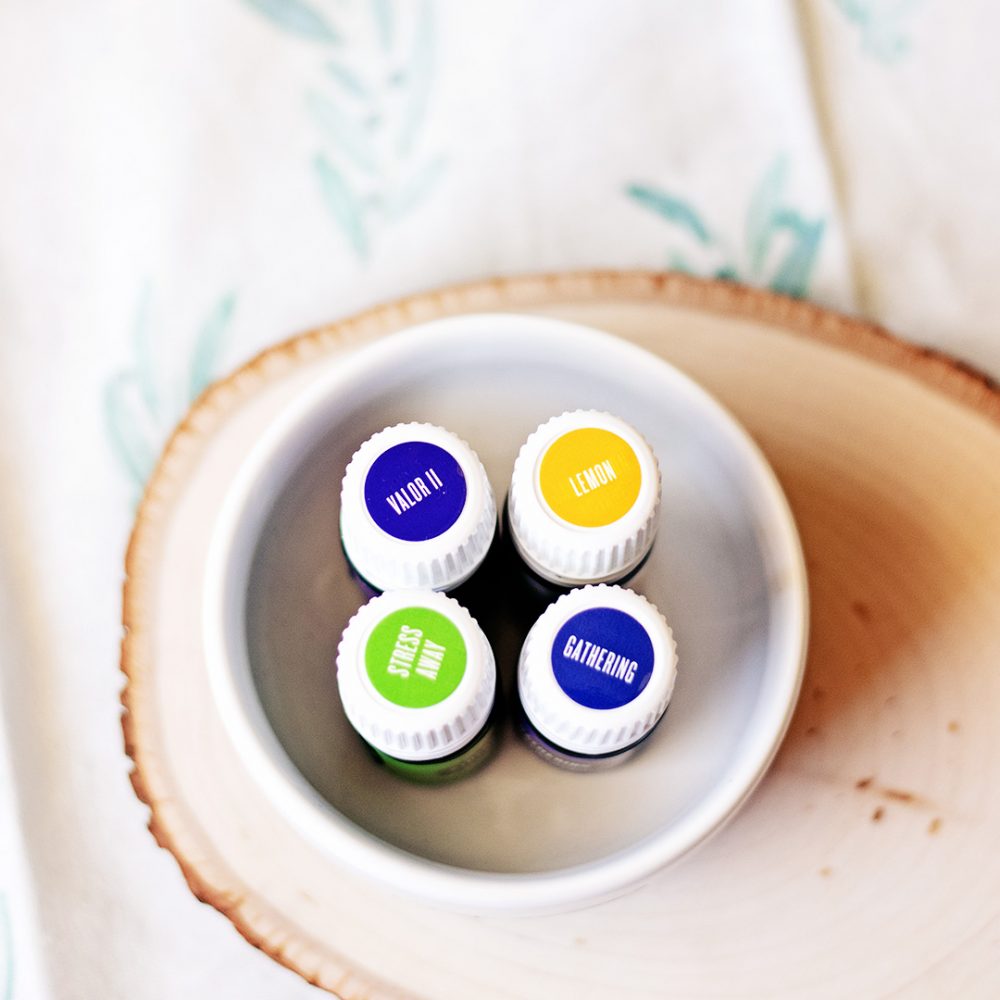
All in all, there are numerous methods on how to use essential oils on
You May Also Like:
- DIY Body Shimmer Spray
- How to Make Foaming Hand Soap
- Essential Oil Roller Bottle Recipes
- Eucalyptus Diffuser Blends
- DIY Crystal Candle Bowl
One last thing to keep in mind, a few essential oils are considered photosensitive. Most of which are citrus oils like lemon,
